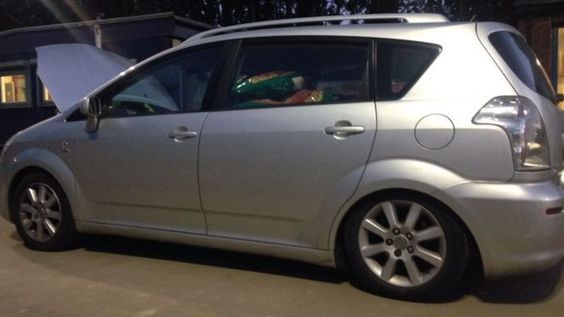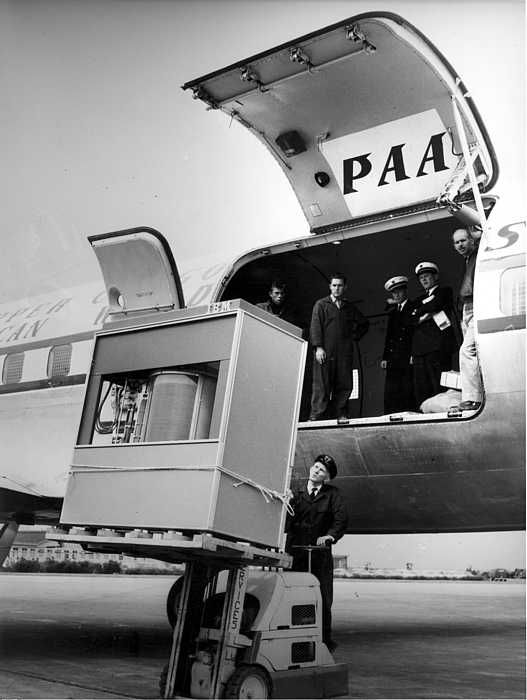Why are you struggling to handle and protect the data you create?
In 1956 the IBM 350 had 3.75MB’s of storage, needed a fork lift truck to move and was flown around the country in its own plane. It’s lot easier to move data today, Amazons ‘Snowball’ is a 50TB version of an IBM 350, but for film makers and filmed content creators the issues of moving, holding and securing data have never been more pertinent or critical.

Over twenty years ago I worked for Talk Back TV on a series of ‘Alas Smith & Jones’, the first UK TV show to edit on the digital editing platform Avid. The editor proudly announced he currently had the most storage ever used on an Avid; 12 gigabytes. It was mind blowing!
12 gigabytes? I bought a 16GB memory stick in a supermarket last week, our Sky Box holds a 1TB of programs my wife will never watch and I have 18TB’s of raided storage on my desk.
Storage solutions are getting bigger and smaller; just look at Samsung’s wondrous new 32TB SSD. But every time someone creates a bigger storage solution it is only in response to someone else creating a way of capturing much bigger data.
When you deal with professional film makers and content creators you only work with huge amounts of data. Pound for pound they create bigger data than any single industry on the planet. One of our clients shot 12TB’s of footage in a single day for a car commercial. A movie can shoot 350TB’s of data with a couple of cameras and a director who doesn’t know how to shout ‘cut’.
And the camera manufactures just keep creating more and more incredible cameras, the images they capture look more spectacular but the downside? The data they create gets bigger!
Storage is becoming the single biggest issue for anyone working with professional digital-film data. Not only does the data get bigger but anyone with a vested interest in the project wants to secure and verify the security of the data.
But how to secure such big data and make sure it is available for years to come?
The first problem is confusing the device you use to hold the data with the data itself; the hard drive is just the vessel for holding the data, not the actual data. Think of grains of sand in a jar, remove the sand from the jar and it is impossible to contain for any length of time. Worse still if jar breaks…
So you need two jars; two copies of everything, maybe on two different formats (drive & LTO is best) and you need to hold them in two separate places. Nothing worse than keeping both copies in the same box that ‘accidentally’ gets thrown out or flooded when the pipes burst. It really does happen.
Then there is the ever changing new digital formats you didn’t know you’d be using or worse still you lose all the cables that fit that drive. Everyone used to have hundreds of FireWire cables in a box but as the years pass they’ve disappeared. You’ll have to strip that drive down to its component parts to get the data off if you can’t find the cable.
Final problem? You better hope that your data basing is immaculate, that your archiving is sorted and whoever is responsible for everything doesn’t get bored. One wrong entry in the database the data you know you’ve got is just another random drive or LTO in a box.
You’ve done everything right, two copies of your data, in separate places and you keep adding to that archive. The pile of data gets added to with new data. One drive on top of another, the stack of LTO’s getting bigger and bigger. Now you’ve got another problem; what the hell have I got and do I really need to keep it?
So why are you struggling to handle and protect the data you create? Because it is a job in itself, a full time job that can be mind-numbingly boring and requires a very particular type of OCD. As the data gets bigger and bigger the job gets harder and the need for singular approach becomes even more important.
One last thought…
Did you hear the story of the man who went to the supermarket because they had a deal on rice? He bought forty 20kg bags of rice, loaded the 800kg’s of rice into his car and drove off. The police stopped him and then fined him for being grossly overloaded. It ended up costing him £300 in fines, more than the total saving on the rice. He only knew he wanted the biggest possible amount of rice but hadn’t thought what to do with it once he walked out the supermarket door.

Professional film and content makers are currently in the same situation; they want the biggest possible data, the largest images and highest possible resolution but the consequences are farther reaching than just changing the settings on the camera.
Film Locker provides digital-film data archiving to advertising agencies, brands, TV production companies and film makers.
